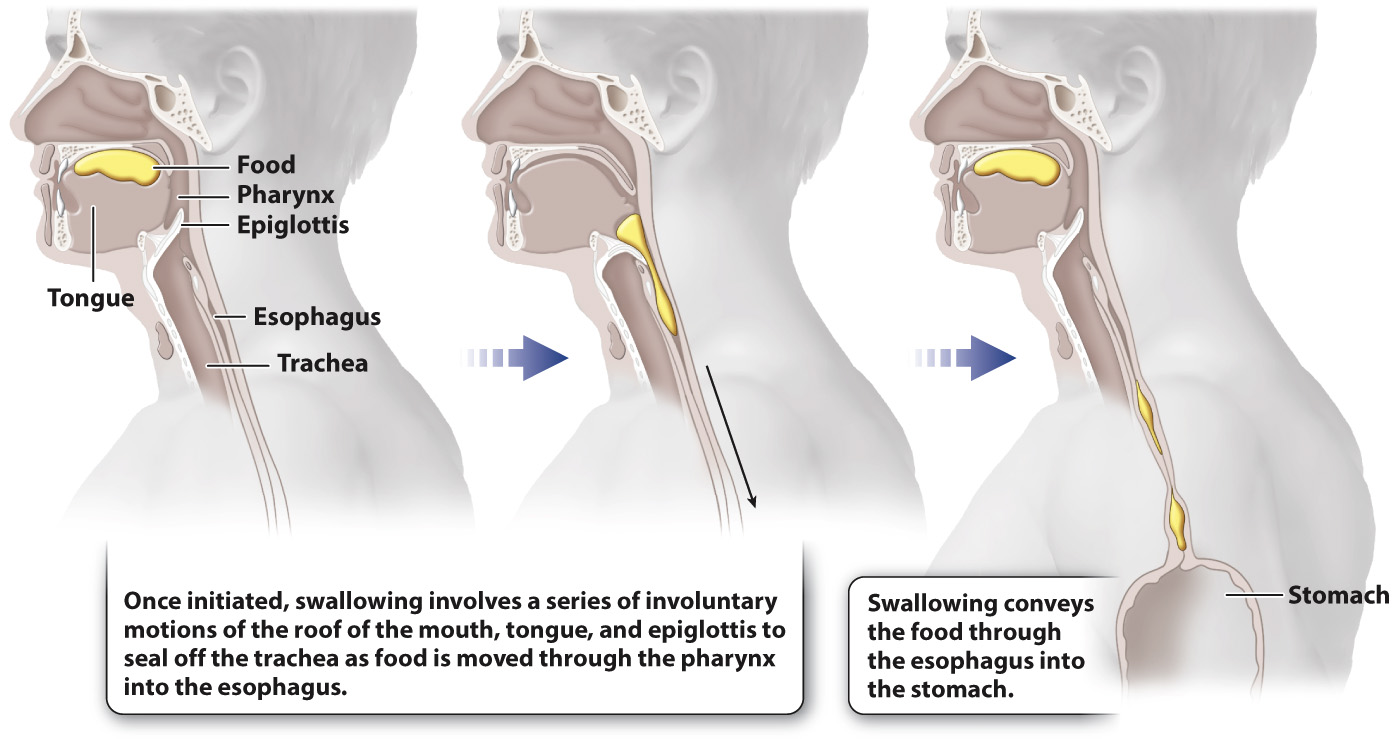Digestion begins in the mouth.
Most animals jump-
After being ingested and mechanically broken down, the food is ready for chemical digestion. Digestion is carried out by enzymes that break the bonds between the subunits of large molecules. These enzymes require the proper chemical environment to function properly: Some enzymes work best at neutral or near neutral pH like that in the mouth or small intestine, but other enzymes work best in acidic environments like that of the stomach. This need for different environments is met by carrying out digestion in different compartments. In some animals, such as mammals, chemical digestion begins in the mouth. Food entering the mouth is mixed with salivary secretions that contain amylase, an enzyme that breaks down carbohydrates, and secretions from the tongue that contain lipase, an enzyme that breaks down lipids (Table 40.3).

The muscular tongue of mammals and other land vertebrates manipulates food and transports it within the mouth cavity. The tongue moves the food into position within the mouth for effective cutting and maceration into smaller pieces by the teeth. When food has been chewed and is ready to be swallowed, the tongue moves it to the rear of the mouth cavity.
Swallowing is a complex set of motor reflexes carried out by several muscles and structures in the rear of the mouth and in the pharynx, the region of the throat that connects the nasal and mouth cavities (Fig. 40.13). Once initiated, swallowing reflexes are involuntary, under the control of the autonomic nervous system. During swallowing, food is pushed through the pharynx, over the epiglottis, a flap of tissue that protects food from entering the trachea and lungs, and into the esophagus, a tube that connects the pharynx to the stomach. In the esophagus, peristalsis moves the food toward the stomach.

Birds, alligators, crocodiles, and earthworms break down food into smaller pieces farther along their digestive tracts in the gizzard, a compartment with thick muscular walls. Birds and earthworms often ingest small rocks or sediment that help grind the food into smaller pieces within the muscular gizzard. Breaking food into smaller sizes aids the chemical digestion that follows.
Quick Check 4 The rocks and sediments in a gizzard that break apart food mechanically play a role similar to what structures in vertebrates?
Quick Check 4 Answer
Rocks and sediments in gizzards break apart food, as teeth do in vertebrates.